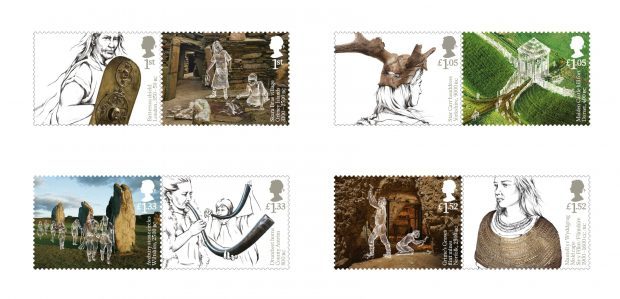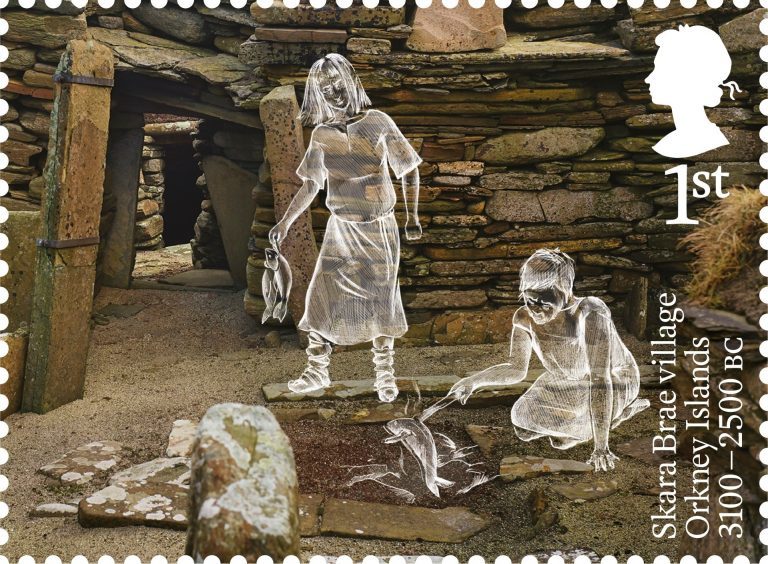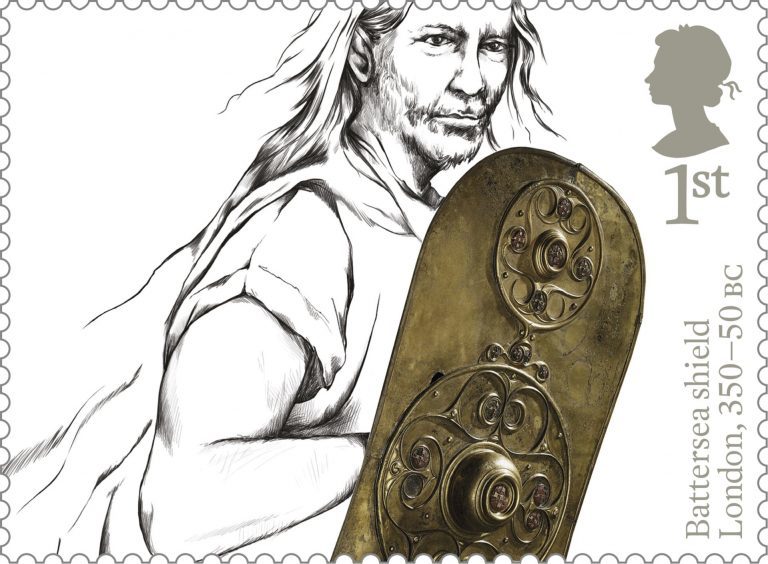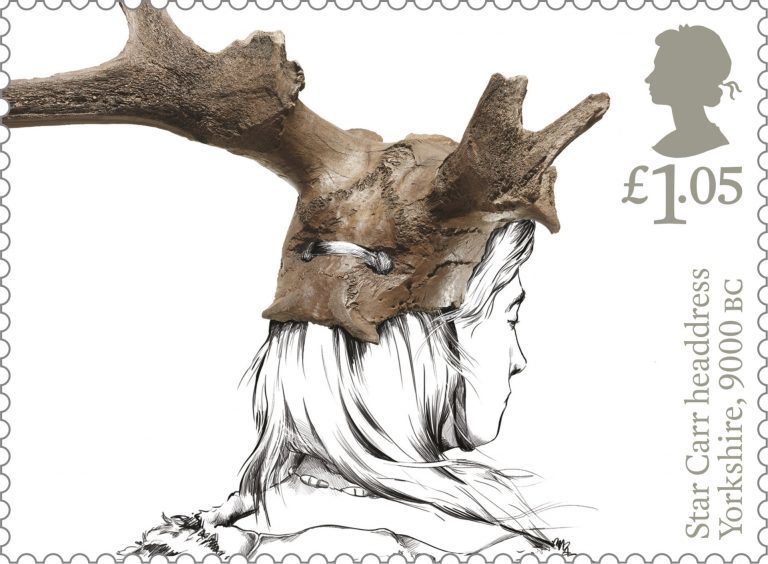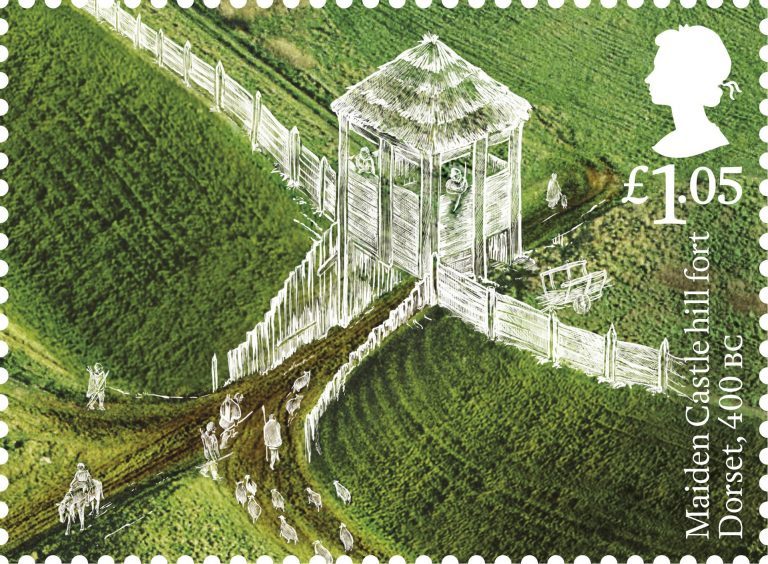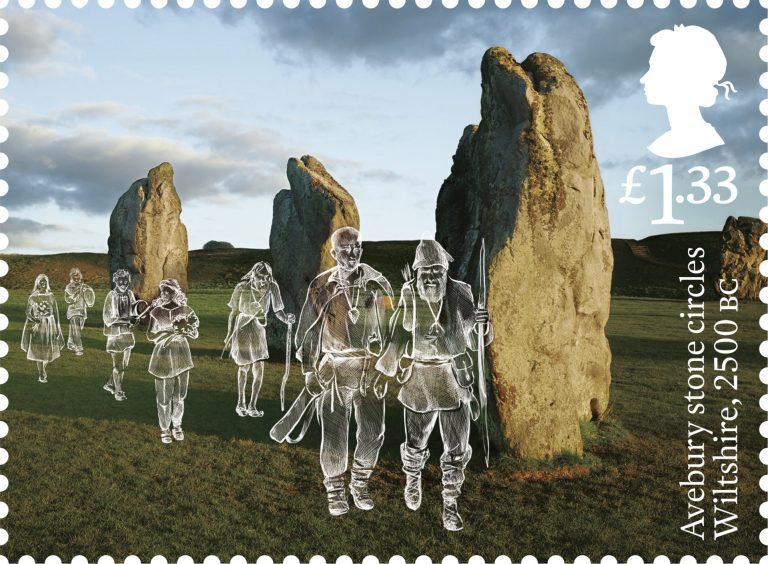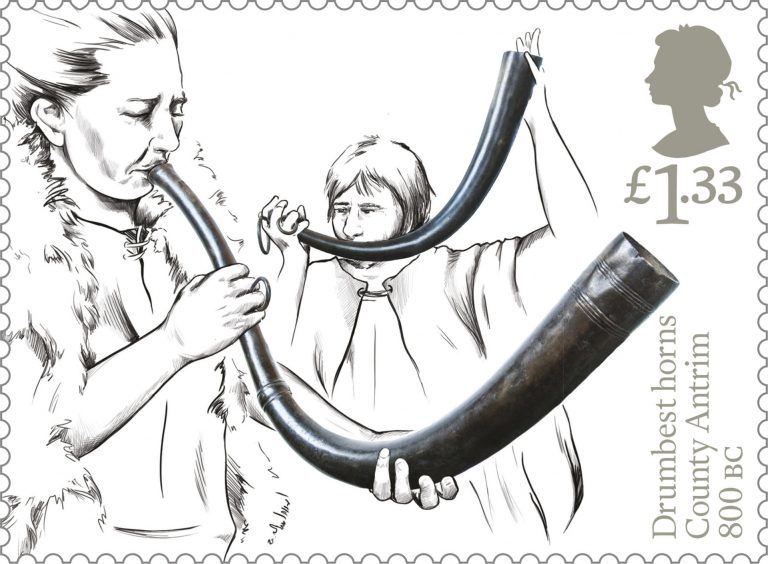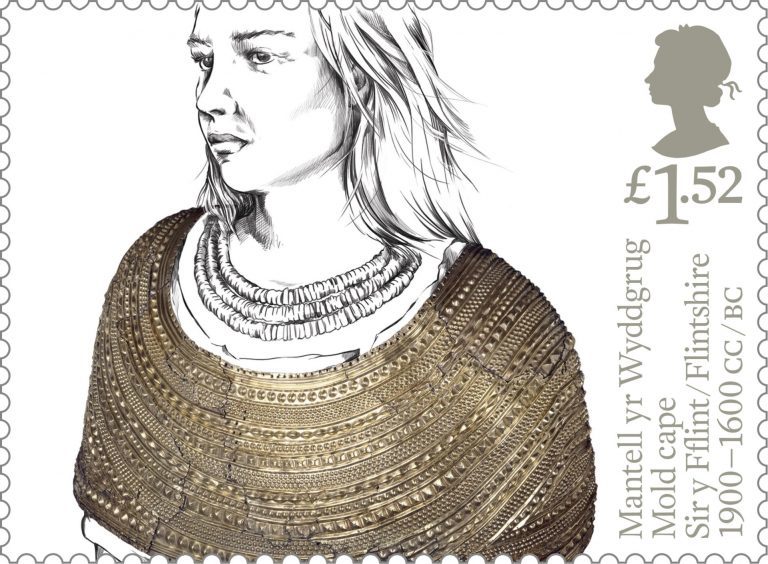The neolithic village of Skara Brae on Orkney is featured in a new set of eight stamps issued by the Royal Mail.
The release features some of the most inspiring objects and atmospheric sites of prehistoric Britain.
And these stamps have an interactive element – if you post a letter using your stamp at a postbox near the site, you will get a special, limited edition postmark.
As well as Skara Brae, the stamps feature the Drumbest horns in Northern Ireland; the Battersea Shield which was found in the River Thames, London; the Star Carr headdress unearthed in North Yorkshire; the Grime’s Graves flint mine in Norfolk; the Avebury stone circles in Wiltshire; the Mold Cape found in Wales; and Maiden Castle hill fort in Dorchester.
Illustrated by London-based artist Rebecca Strickson, the stamps have been designed as overlay illustrations, showing how people lived at the sites or used the objects.
The stamps present a timeline from an ancient ritual of 11,000 years ago, to the Iron Age of around 300BC. They show a huge degree of organisation in ambitious building projects and sophisticated metalwork.
For each of the stamps, Royal Mail will provide a special postmark on all mail posted in a postbox close to the site or where the artefact was found.
For Skara Brae, collectors and members of the public should post their mail at the postbox at the former Post Office in Sandwick, Orkney, between today and January 21 to receive the special hand stamp.
Philip Parker, stamp strategy manager at the Royal Mail, said: “The UK has an incredibly rich heritage of prehistoric sites and exceptional artefacts.
“These new stamps explore some of these treasures and give us a glimpse of everyday life in prehistoric Great Britain and Northern Ireland, from the culture of ancient ritual and music making to sophisticated metalworking and the building of huge hill forts.”
The stamps are available from today at 7,000 Post Office branches.
